After a short gap, ‘The Tour of Less Known Hoysala Kingdom’ from Travel Wise is back again. We will be going on a tour on the weekend of February 13th, in which I will take a small group through some less known but beautiful temples around Belur and Halebeedu, built by the Hoysalas. The tour is not just about going from place to place, but involves knowing a lot about the dynasty and the temples. We will also do a walk inside a coffee estate and find out everything about growing coffee.
We had received great response in earlier editions of the tour, and the feedback was excellent. See details of the tour on travelwise.in. The group size will be small, between 8 and 11, so register early.
Click on the image to see large version. See related posts at the bottom of this post to know more about the places we visit.

Spituk was the first monastery I visited in Ladakh. A few pictures from the visit.
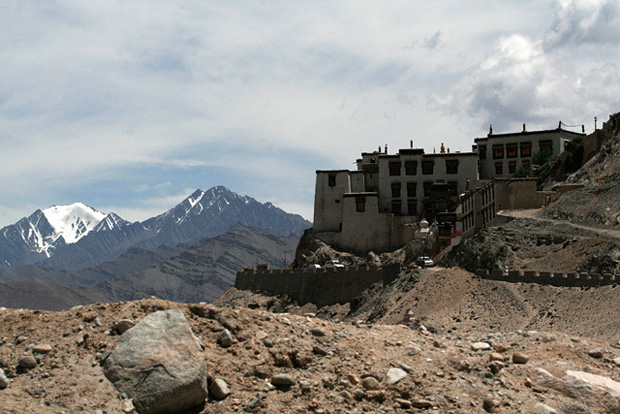
Spituk Monastery, like all monasteries in Ladakh, is located on a hill overlooking the village. River Indus flows behind the monastery, beyond which are the tall mountains capped with ice. On the other side of Spituk is a very different landscape where the wide valley of Indus is used in constructing the Leh Airport and the army installations. At less than 10km from Leh, Spituk it is almost ready to be consumed by the expanding town.
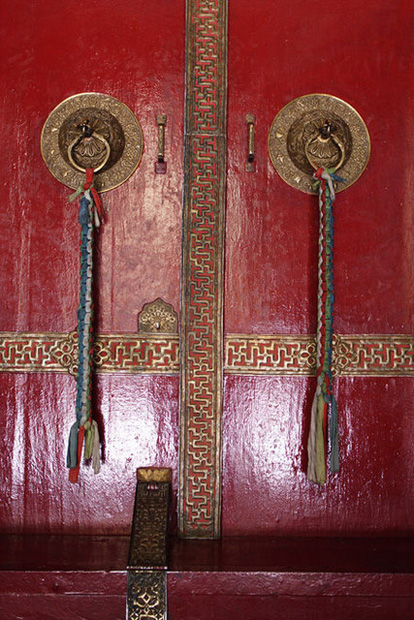
The colourfully painted doors of dukhang (prayer hall) in Spituk Monastery.
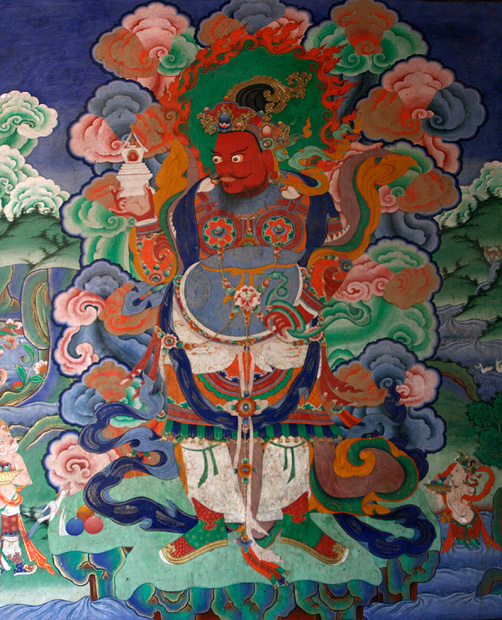
A mural of Virupaksha (also called Chanme-Zang), the lord of the west direction. The front wall of the prayer hall in every monastery is usually painted with images of guardians dieties of four directions.
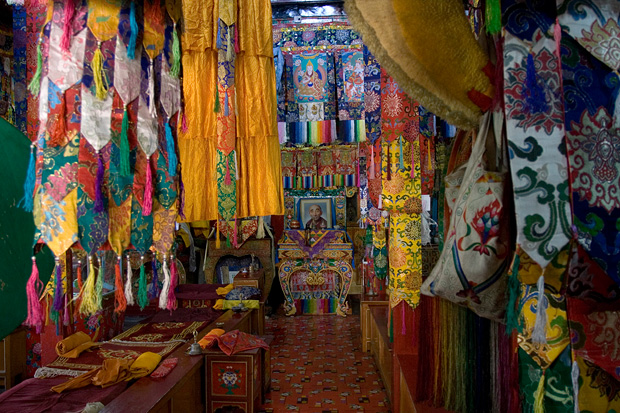
Colourful decorations in the prayer hall of Spituk Monastery.
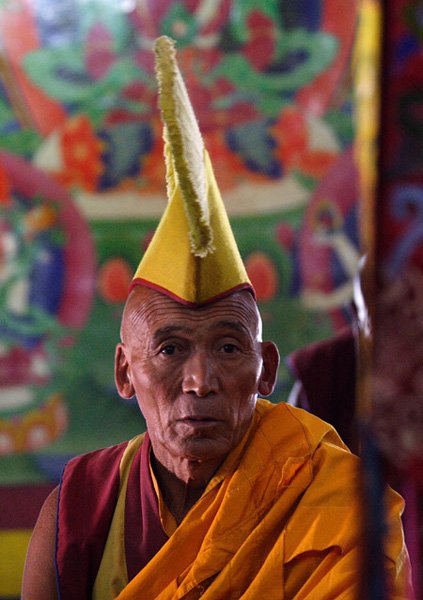
A monk wearing the traditional yellow hat of the gelug pa lineage at Spituk Monastery.
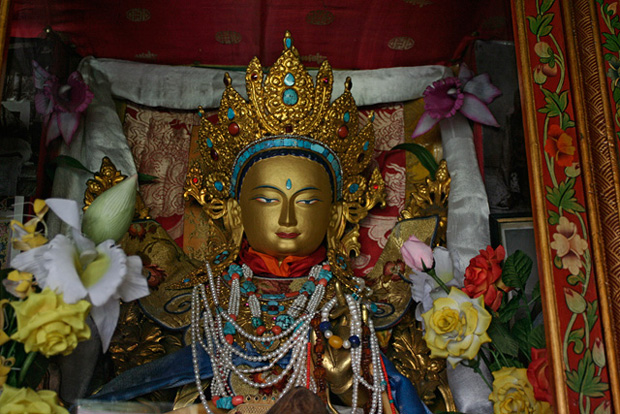
A statue of Tara (also called Dolma), a female Bodhisattva. Spituk Monastery has a room dedicated to images of Tara, called Dolma Lhakhang or the Temple of Tara
Note: See glossary for meaning of terms marked in bold below.
Just getting to Likir and back was a mild adventure where we ran into multiple obstacles. But we happened to be there at the right time to witness the rituals in a special puja.
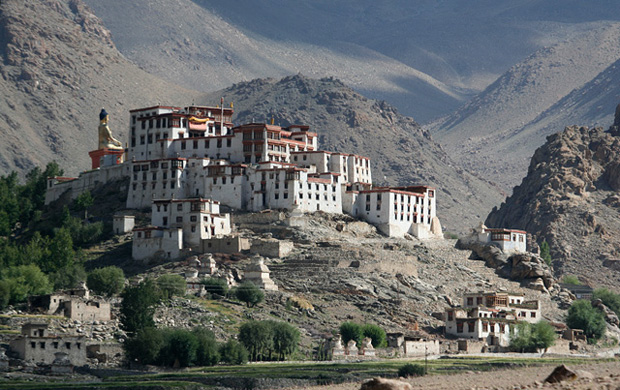
We got caught in high speed winds as soon as we left Leh in a rented two-wheeler. It seemed like a passing thing at first, but the strong winds kept our company for the next fifteen minutes. It was never too strong and threatening enough to blow us away, but had the strength to throw every bit of dust and dirt towards us. It was a tortuous ride against the wind, allowing me to go at speeds no more than ten to fifteen kilometers per hour. In a small stretch where we had to drive close to Indus, the gale lifted the river’s waters and splashed on us generously with great force.
Worried and stuck in the middle of the storm, I looked around for alarmed people who would be searching for a shelter. A jeep passed in the opposite direction, their occupants looking so calm as though they did not notice anything abnormal. A man riding a scooter came from behind and did not appear troubled either. ‘This must be normal,’ I told myself, and let go of the thoughts of searching for a shelter or thinking of heading back.
It was late evening before we approached the mountains near Likir, riding past the confluence of Indus and Zanskar in Nyemo (also written as Nimmu, Nimu, Nimo, Nimmo and every other possibility you can arrive at, keeping N in the beginning and m as the next consonant!) and the precariously perched Basgo Monastery. We missed our turn to Likir, as the only sign at the fork advertised a guesthouse and gave away no other information. Treading an extra five kilometers and realizing the folly after arriving at Saspol Village, we headed back and turned into the right track to arrive at Likir in darkness.
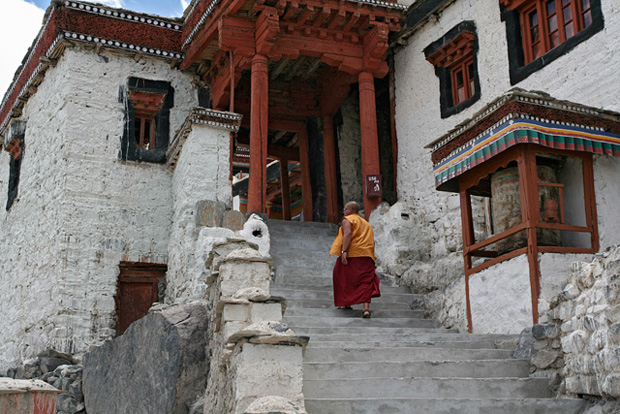
Next morning, we left the bike behind and walked through the village and its barley fields to the monastery at the far end of the village. What seemed to be a short walk stretched longer and longer in the hot sun, tiring my unprepared mind and body. Likir Monastery is a cluttered assembly of buildings surrounded by willow trees on a crag. A stream runs at the base of the crag, originating from the taller ica-capped mountains beyond the monastery. At a corner of the monastery is a tall statue of Buddha that shines brightly in the sun.
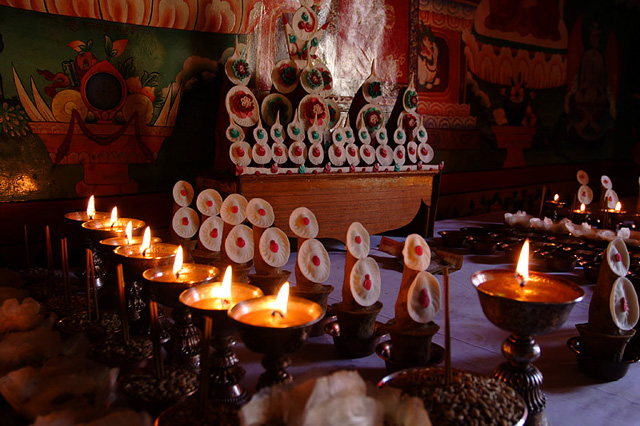
The monastery looked empty at first, until I saw the dukhang filled with ochre robed monks of all ages getting ready for a special puja to install a Yamantaka Mandala. The prayer hall was decorated with lines of torma and oil lamps for the puja. The puja was elaborate process, with all the monks gathered in dukhang and chanting together for a few hours. They begin with their regular ochre robe, slipping in another layer of cloth a little later. An ornate headgear gets added soon, which gets replaced later with the traditional yellow-hat of the drukpa lineage. Chanting continues all through, accompanied with hand movements making various mudras and gestures. The puja is finally concluded by returning to their original robes.
While all this goes on, the little monks sitting in a separate row behave the way kids should be. Some naughty kids begin play-fight with neighbours. Some of them look bored and lost in a world of dreams. One of the brats gets up in the middle and requests to be excused, but he is gently ordered to get back to his seat.
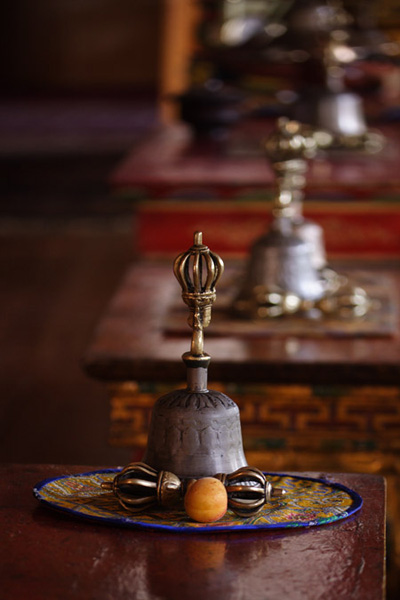
Back from the monastery in the evening, the adventures of the journey continued as we discovered that the bike’s rear tyre is punctured. The attempt to get the punctured bike back to Leh deserves another chapter altogether.
Information
The monastery at Likir is among the best maintained monasteries in Ladakh. One of the special features of the monastery is the 3-storey high statue of Buddha.
How to reach. Likir is about 50km from Leh. You can hire cabs in Leh to take you there. It should be possible to combine your visit to Likir with Alchi. If you have the time, visit the confluence of Indus and Zanskar at Nyemo on the way. Another worthwhile stopover is the fort and monastery at Basgo, which falls on the way. Public transport is available from Leh to Likir. But inquire in advance, as the buses may leave you at the village, which is an hour’s walk from the monastery.
Food and accommodation. There are many guesthouses spread along the village of Likir, but most of them are about 30 to 60 minutes walk from the monastery. Options for food are limited but available. Most guesthouses cater to their occupants.
Map and driving directions
View Leh to Likir in a larger map










